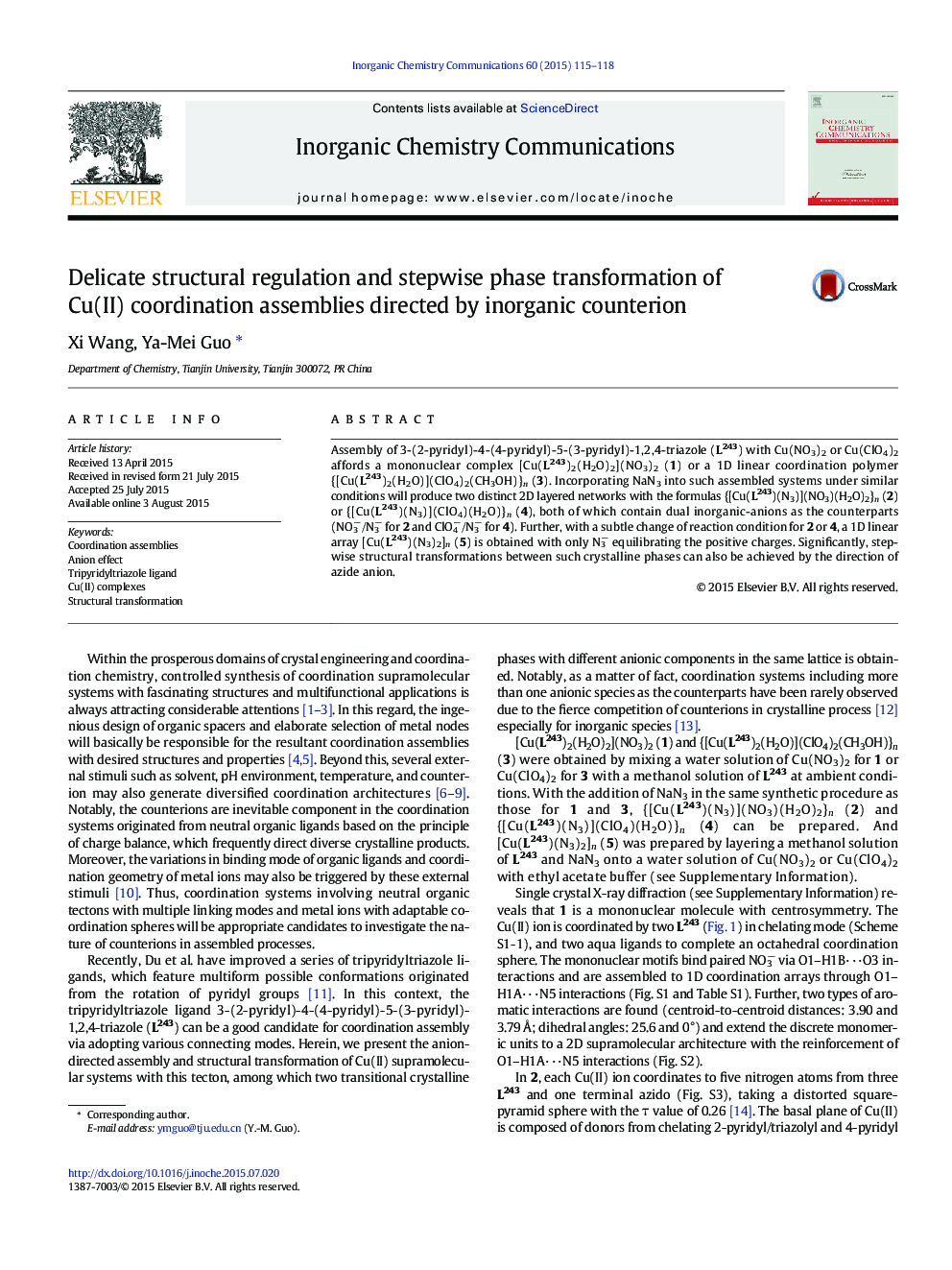| کد مقاله | کد نشریه | سال انتشار | مقاله انگلیسی | نسخه تمام متن |
|---|---|---|---|---|
| 1303357 | 1498930 | 2015 | 4 صفحه PDF | دانلود رایگان |

• Five Cu(II) supramolecular complexes based on a versatile tripyridyltriazole ligand are obtained.
• Their diverse structures can be well regulated by inorganic anions used in coordination assembly.
• Stepwise structural transformations occur between the crystalline phases directed by azide anion.
Assembly of 3-(2-pyridyl)-4-(4-pyridyl)-5-(3-pyridyl)-1,2,4-triazole (L243) with Cu(NO3)2 or Cu(ClO4)2 affords a mononuclear complex [Cu(L243)2(H2O)2](NO3)2 (1) or a 1D linear coordination polymer {[Cu(L243)2(H2O)](ClO4)2(CH3OH)}n (3). Incorporating NaN3 into such assembled systems under similar conditions will produce two distinct 2D layered networks with the formulas {[Cu(L243)(N3)](NO3)(H2O)2}n (2) or {[Cu(L243)(N3)](ClO4)(H2O)}n (4), both of which contain dual inorganic-anions as the counterparts (NO3−/N3− for 2 and ClO4−/N3− for 4). Further, with a subtle change of reaction condition for 2 or 4, a 1D linear array [Cu(L243)(N3)2]n (5) is obtained with only N3− equilibrating the positive charges. Significantly, stepwise structural transformations between such crystalline phases can also be achieved by the direction of azide anion.
A series of Cu(II) supramolecular complexes can be assembled from 3-(2-pyridyl)-4-(4-pyridyl) -5-(3-pyridyl)-1,2,4-triazole and different inorganic salts, in which azide anion is involved as the counterpart in different degrees to regulate their structures and stepwise structural evolution.Figure optionsDownload as PowerPoint slide
Journal: Inorganic Chemistry Communications - Volume 60, October 2015, Pages 115–118